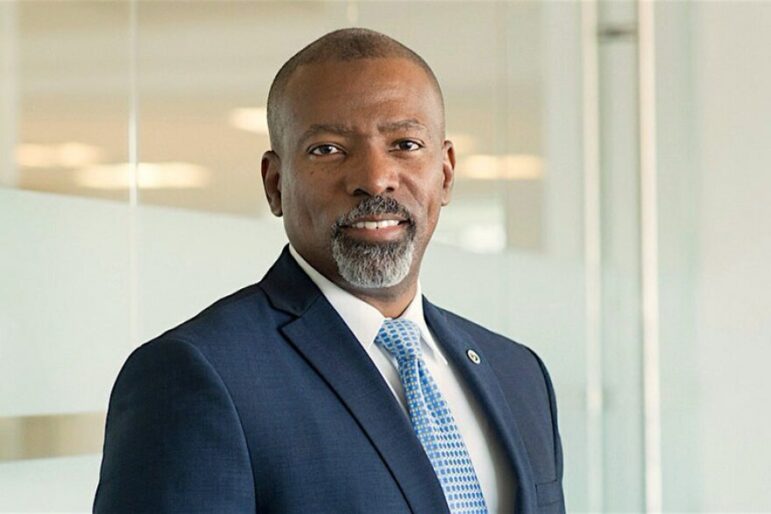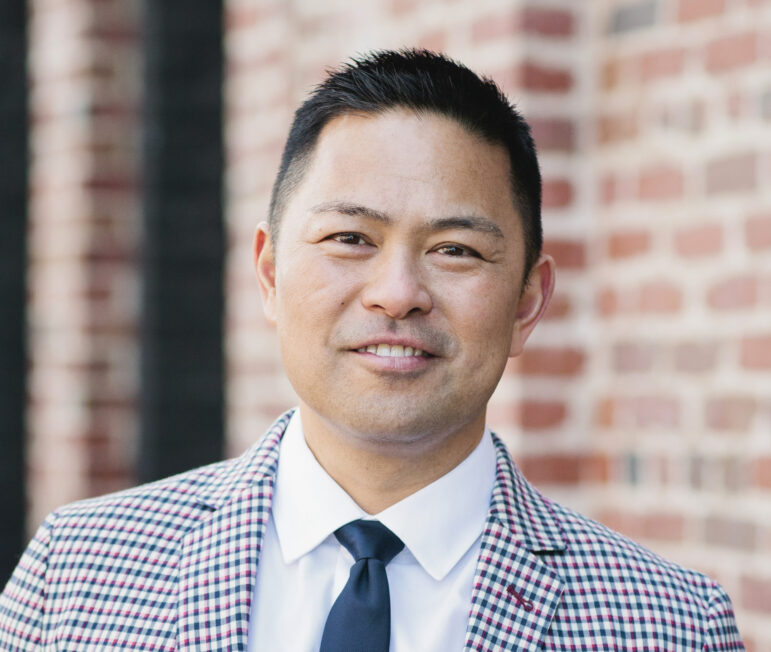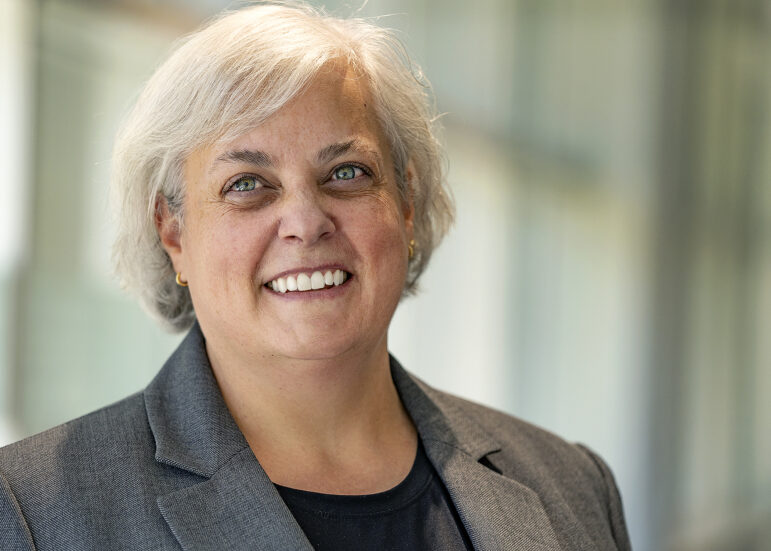How succession planning can smooth transitions for new station leaders

Jon Krause
Nathan Vandiver’s ascent into public media management began in early 2016, when Ben Fry, longtime GM of KUAR in Little Rock, Ark., died in his sleep of an apparent heart attack.
Fry’s death at age 54 was a shock for the station’s staff and its licensee, the University of Arkansas at Little Rock. Fry became GM in 1995 but had worked at KUAR since the late ’80s, starting as news director and later moving up to PD, the job that Vandiver was doing.
With Fry’s death, decades worth of institutional knowledge evaporated, Vandiver said in an interview. To add to the turmoil, KUAR didn’t have a succession plan in place. But it became clear early on that, as PD, Vandiver would be asked to serve as GM for an indefinite period of time.

Vandiver agreed to step up on an interim basis and became the station’s permanent GM in 2019, but now he is preparing to leave KUAR and relocate to Portland, Ore., for his wife’s new job. His agenda now focuses on ensuring that KUAR’s next leader, as well as other staffers, have everything they need to manage the station when he signs off.
“The workplace is a bit different than it was six years ago,” Vandiver said. “We understood that with Ben’s passing, we need to make sure that more folks know how to do more things. Having been through that experience, that has significantly informed the way I’ve approached this.”
For all the complexities and contingencies involved in leadership transitions, succession planning is a deliberate process intended to provide stability and support for staff and new leadership. It involves board members and senior staff thinking through how to ensure a smooth transition while identifying people with the skills and experience to lead organizations.
Public media stations often decide to conduct national searches to ensure the process is thorough and open; in addition, some lay a path for insiders to grow professionally while proving themselves on the job. Such preparations help to prevent situations like what happened to Vandiver at KUAR, where a staffer suddenly steps up and has to learn the job while doing it on an interim basis.
The succession process tends to move in accordance with the level of expertise on a station’s board, said Tom Livingston, CEO of the recruiting firm Livingston Associates, which specializes in executive searches for public media organizations. Station boards whose directors have management experience tend to need less guidance because they have a better sense of the leadership qualities they are looking for.
Some larger stations have detailed succession plans in place, and their preparations can leave smaller stations at a disadvantage during recruitment. “The goal in succession planning is to identify the next person in line for each of your management positions,” Livingston said. “But if you have a smaller station, the chance of you being able to do that is not that great.”
Stepping up as an interim leader
Vandiver interned at KUAR in 2009 and worked his way up as a reporter and anchor before his 2013 promotion to PD. He was focused on his programming job and wasn’t looking to become a GM or CEO when Fry died. Accepting the interim position fast-tracked his career trajectory.
Vandiver initially focused on shoring up KUAR financially. The station was operating in the red. He agreed with Lisa Bond-Maupin, a former university dean who helped oversee the station, that rectifying KUAR’s cash flow was more important than rushing to recruit a permanent GM.
Beyond the financial challenges, Vandiver struggled with not having anyone to turn to as a mentor who could show him the ropes. In planned successions, outgoing leaders typically agree to be at least an informal resource or sounding board. In some cases, departing execs time their exits so they can help their successor get settled into the job.
This is the approach Vandiver is taking. He plans to stay on as GM this year while the board searches for his successor. He’s also creating a checklist for the next GM and plans to hand off documents, lessons and tips so key staffers can manage the station’s finances and operations.
WKAR Public Media in East Lansing, Mich., is in the middle of a succession process following the resignation of Susi Elkins, who recently left for a job with the Michigan State University Federal Credit Union. She had worked at WKAR, which is licensed to Michigan State University, since 1998 and rose to GM in 2017.

Interim GM Shawn Turner, an MSU communications professor who served as a deputy White House press secretary during the Obama administration, was selected for the role by Prabu David, dean of MSU’s College of Communication Arts and Sciences, before Elkins’ departure. In May, her last month at the station, Elkins gave Turner a crash course at running WKAR and introduced him to other public TV leaders during a spring PBS meeting for GMs, which helped him build contacts.
Although Turner is new to public media management, he had been a familiar face at WKAR. In addition to his role as a professor, he hosted COVID-19: Answers and Insights, a 2020 limited-run TV series WKAR launched in response to the coronavirus pandemic.
Turner’s previous experience with public-facing communications tracks well with his current duties, he said in an interview. During the Obama administration, he specialized in dealing with national security issues for the White House press office, the National Security Council and the Department of Defense. He served more than two decades in the U.S. Marine Corps and became an analyst for CNN in 2018.
Turner wants to continue the work Elkins prioritized with ATSC 3.0 and converting more of WKAR’s viewers to PBS Passport, the streaming service for station donors. But he believes that interim leaders should avoid making drastic changes, even if they aspire to run the station in the future.
“For me, this isn’t about coming in to change a lot of things,” Turner said, “It really is about helping the team continue to do the work that they’re doing.”
Turner hasn’t applied to be permanent GM but said he is “strongly considering throwing my hat into the ring.” Regardless of the outcome of WKAR’s leadership search, Turner is interested in working on a public TV policy and public affairs program with a national reach, an idea he was mulling over before Elkins stepped down.
Plan early for ‘smooth transition’
Louisiana Public Broadcasting recently completed a leadership transition that had been planned years ago — and one that follows a model for preparing senior managers to move into the top job. Clarence Copeland succeeded Beth Courtney as CEO shortly after her retirement. Copeland, a television engineer who had worked for LPB for 25 years, learned the ins and outs of the job after a 2021 promotion to deputy director. When Courtney retired, he served as acting director for several months.
“A number of years ago, a deputy director position was established by the state with the thought that, should the CEO leave … or be unable to serve the duties for any reason, the deputy director could step into the CEO role and manage the agency,” said Katherine Scherer, an LPB spokesperson and pledge producer, in an email. “The deputy also serves as the trusted confidant of the CEO, and the two work closely together to ensure all compliances and obligations are met.”
Copeland served as acting executive director during the national search for Courtney’s successor. He applied for and was appointed to the CEO job. Now the state network is recruiting a new deputy director “in order to maintain the successful framework that LPB has in place,” Scherer said.
Another station that followed a succession plan built with running room for an internal candidate is KQED in San Francisco. In 2018, when then-CEO John Boland announced his plan to retire in September 2019, the board had already worked with an executive search firm to identify his successor. And board members had decided that Michael Isip, who’d worked closely with Boland in senior-level roles and as COO, would gradually take over as CEO while Boland stepped back.
Chuck Kissner, KQED’s board chair at that time, described the succession plan in a press release announcing Isip’s promotion to “president elect.” The board appointed a task force to conduct the search and “planned early on for a smooth leadership transition with significant overlap,” he said. Isip continued his COO duties as Boland moved into a president emeritus role, focusing on an ongoing capital campaign and a major renovation of KQED’s headquarters. The board officially named Isip president and CEO in April 2019, and Boland retired as planned that September.
Isip had worked for KQED since 2001 and knew early in his career that his goal was to eventually become CEO of a large station. He prepared by steadily working his way up into executive leadership. He joined KQED as an EP for the TV station, then rose to senior-level positions. When he became COO, he helped oversee much of KQED’s reorganization as a multiplatform media operation.

Isip sees open dialogue between CEOs and their staffers as the key to effective succession planning. Top managers should ask members of their executive team, mid-level managers and even entry-level staffers about their short- and long-term career goals, he said. Through those conversations, leaders can help their employees reach their potential, even if they find the perfect fit at another station.
“Ask your team what kind of skills they want to grow and how you can support that,” he said. “We have a responsibility to grow leaders for the entire system. You never want to lose people, talented folks, but again, if they go on to bigger and better things, what does that say about KQED as a launching pad?”
That kind of openness helped with Isip’s own move into the CEO job. “John and I are close,” he said. “We’ve been friends for a long time, and he’s been my mentor for several years.” Isip admired Boland’s willingness to be a resource during the transition and his acceptance of having his own vision of the future of KQED. “It was a gift to have him there, honestly,” he said.
“I don’t think it’s easy in general for leaders to go off into the sunset,” Isip said. “For John to be able to see that he’s leaving and it’s my time, to really give me that space, that says a lot about him.”
Transparency for staff
Succession plans don’t have to be complicated to lay the ground for a smooth transition, but they should be as transparent to staff as possible, said Laura Hunter, COO and station manager for KUEN in Salt Lake City.
The Utah Education and Telehealth Network, which operates KUEN and is owned by the Utah System of Higher Education, completed the transition from former CEO Ray Timothy, who retired, to Spencer Jenkins, previously a legislative officer for USHE, in about four months.

“I’m kind of glad that it moved as quickly as it did because it’s a tense, emotional process for everybody — for all the employees, the candidates, for the board,” Hunter said. “It was just enough time that we were able to do a really thorough search but not so much time that that level of anxiety persisted.”
The process moved quickly because key board members had experience in managing successions, Hunter said. As the search progressed, Board Chair Robert Wagner, an EVP at Utah State University, opened up town halls where staffers could ask finalist candidates about their plans for leading the station. Afterwards, employees were invited to complete an anonymous survey that gathered additional feedback for the board to consider.
“That’s very much in line with how searches are conducted in the academic world,” Hunter said. “Having had that experience really set us up for success.”






